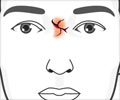A new study suggests that an electronic nose can be used to successfully detect different sub-groups of asthmatic children.

Healthcare professionals now understand that there are many different types of asthma and that it affects people in very different ways. Current research efforts are focused on categorising these different clusters into phenotypes and on revealing underlying pathophysiological pathways of these smaller sub groups of asthma. If this can be achieved, it will help healthcare professionals tailor asthma treatment to suit each person, rather than a 'one size fits all' approach.
The new study analysed the profile of exhaled breath in samples from 106 children with asthma or wheeze. This involved looking at particles in the breath known as exhaled volatile compounds, which are then analysed by so-called electronic noses.
The results showed five distinct sub-groups. Each cluster contained patients with similar breath profiles. When comparing the clinical characteristics of these groups they differed in age and asthma symptoms. The findings suggest that exhaled-breath analysis by an electronic nose can be useful in understanding the differences between individuals with asthma, which could ultimately help with identifying sub-groups of the condition.
Paul Brinkman, lead author of the study from the Academic Medical Centre in Amsterdam, said: "We know electronic noses have the potential to help us understand more about a range of lung diseases. In this study, we have shown that they are an effective method of understanding more about the subtle differences seen between people with asthma. By classifying asthma into different subgroups, we might be able to provide much more tailored treatment for each individual."
Source-Eurekalert












